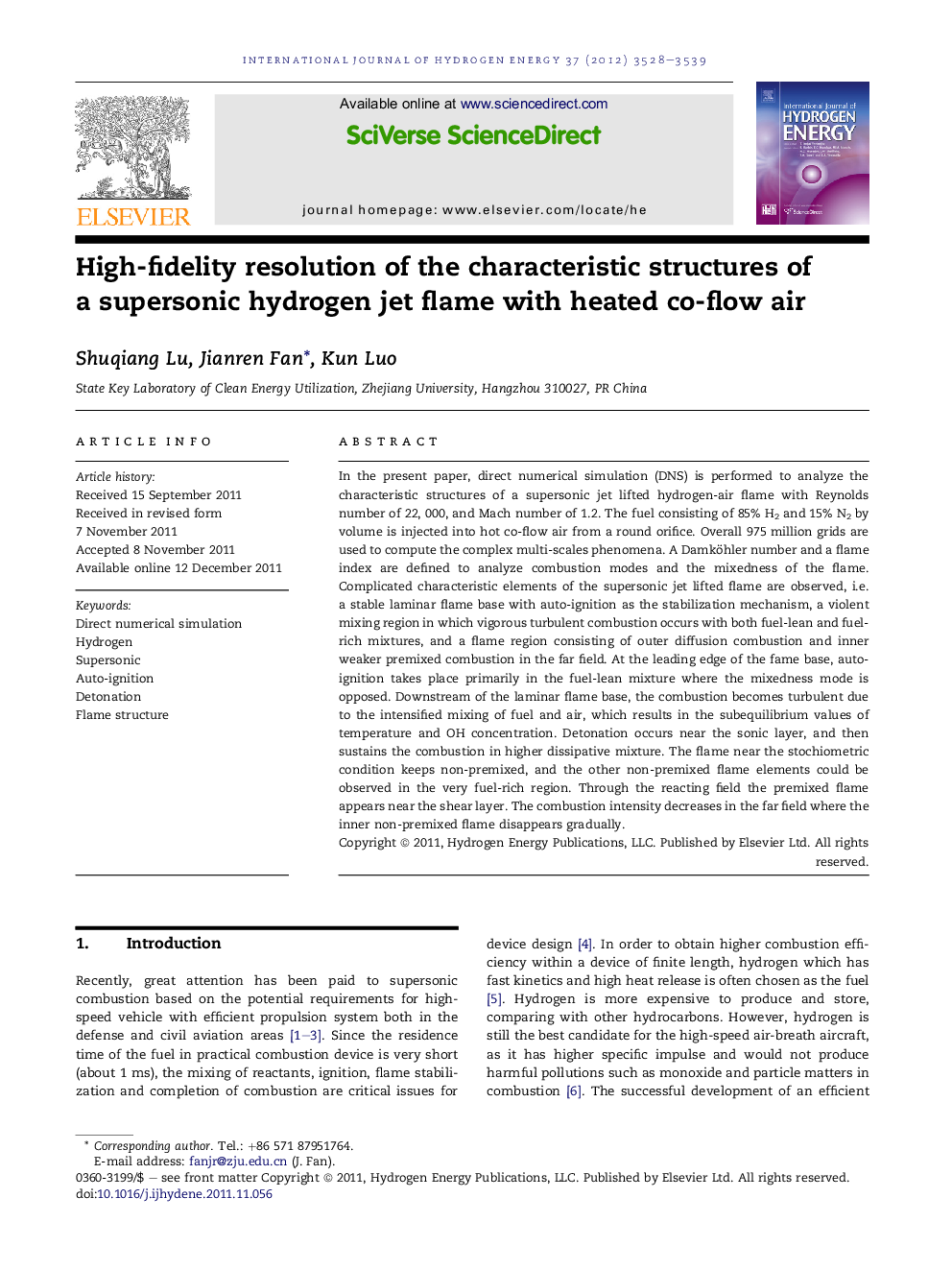| کد مقاله | کد نشریه | سال انتشار | مقاله انگلیسی | نسخه تمام متن |
|---|---|---|---|---|
| 1282360 | 1497565 | 2012 | 12 صفحه PDF | دانلود رایگان |

In the present paper, direct numerical simulation (DNS) is performed to analyze the characteristic structures of a supersonic jet lifted hydrogen-air flame with Reynolds number of 22, 000, and Mach number of 1.2. The fuel consisting of 85% H2 and 15% N2 by volume is injected into hot co-flow air from a round orifice. Overall 975 million grids are used to compute the complex multi-scales phenomena. A Damköhler number and a flame index are defined to analyze combustion modes and the mixedness of the flame. Complicated characteristic elements of the supersonic jet lifted flame are observed, i.e. a stable laminar flame base with auto-ignition as the stabilization mechanism, a violent mixing region in which vigorous turbulent combustion occurs with both fuel-lean and fuel-rich mixtures, and a flame region consisting of outer diffusion combustion and inner weaker premixed combustion in the far field. At the leading edge of the fame base, auto-ignition takes place primarily in the fuel-lean mixture where the mixedness mode is opposed. Downstream of the laminar flame base, the combustion becomes turbulent due to the intensified mixing of fuel and air, which results in the subequilibrium values of temperature and OH concentration. Detonation occurs near the sonic layer, and then sustains the combustion in higher dissipative mixture. The flame near the stochiometric condition keeps non-premixed, and the other non-premixed flame elements could be observed in the very fuel-rich region. Through the reacting field the premixed flame appears near the shear layer. The combustion intensity decreases in the far field where the inner non-premixed flame disappears gradually.
► DNS is used to investigate the structure of a supernoic hydrogen-air lifted flame.
► Very complicated elements are obtained.
► Following a laminar flame base with auto-ignition, a vigrous combustion region occurs.
► In the far field, both mixing and combustion become weaker.
► The significance of detonation in sustaining the combustion is emphasized.
Journal: International Journal of Hydrogen Energy - Volume 37, Issue 4, February 2012, Pages 3528–3539